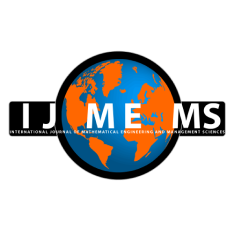Ompal Singh
Department of Operational Research, University of Delhi, Delhi, India.
Saurabh Panwar
Department of Operational Research, University of Delhi, Delhi, India.
P. K. Kapur
Amity Center for Interdisciplinary Research, Amity University, Noida, Uttar Pradesh, India.
DOI https://doi.org/10.33889/IJMEMS.2020.5.2.017
Abstract
In software engineering literature, numerous software reliability growth models have been designed to evaluate and predict the reliability of the software products and to measure the optimal time-to-market of the software systems. Most existing studies on software release time assessment assumes that when software is released, its testing process is terminated. In practice, however, the testing team releases the software product first and continues the testing process for an added period in the operational phase. Therefore, in this study, a coherent reliability growth model is developed to predict the expected reliability of the software product. The debugging process is considered imperfect as new faults can be introduced into the software during each fault removal. The proposed model assumes that the fault observation rate of the testing team modifies after the software release. The release time of the software is therefore regarded as the change-point. It has been established that the veracity of the performance of the growth models escalates by incorporating the change-point theory. A unified approach is utilized to model the debugging process wherein both testers and users simultaneously identify the faults in the post-release testing phase. A joint optimization problem is formulated based on the two decision criteria: cost and reliability. In order to assimilate the manager’s preferences over these two criteria, a multi-criteria decision-making technique known as multi-attribute utility theory is employed. A numerical illustration is further presented by using actual data sets from the software project to determine the optimal software time-to-market and testing termination time.
Keywords- Field environment, Imperfect debugging, Multi-attribute utility theory (MAUT), Testing termination time, Software reliability.
Citation
Singh, O., Panwar, S., & Kapur, P. K. (2020). Determining Software Time-to-Market and Testing Stop Time when Release Time is a Change-Point. International Journal of Mathematical, Engineering and Management Sciences, 5(2), 208-224. https://doi.org/10.33889/IJMEMS.2020.5.2.017.



